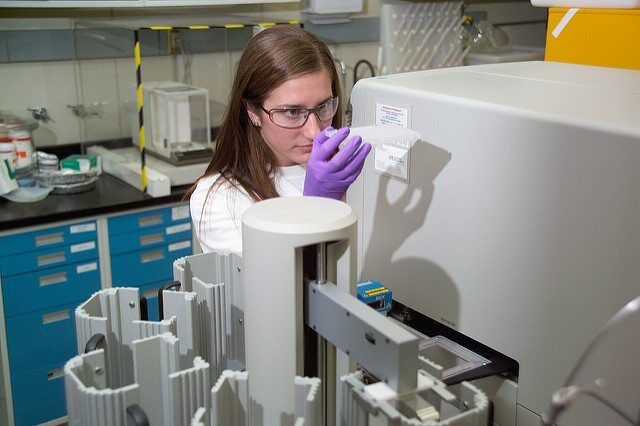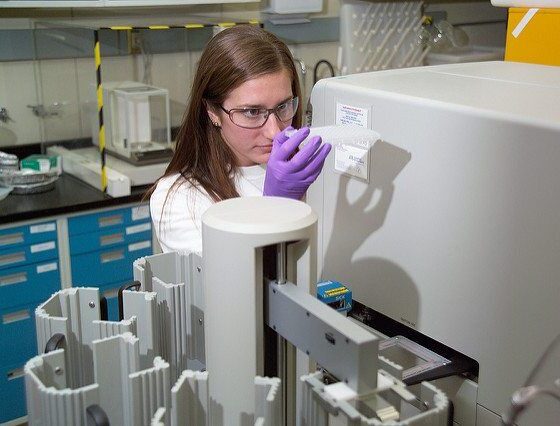

Energy
Six Ways Tech Is Helping the Environment
There are several main schools of thought when it comes to how to save our environment and ourselves from manmade climate change. The people on one end of the spectrum believe that with enough technological innovation and economic development, we’ll figure out a way to solve our environmental problems. The other side believes we need to learn from nature and encourage only environmentally sustainable economic practices.
The best answer may lie somewhere in between the two extremes. Technology may eventually provide substantial solutions to our environmental woes. Ignoring our impact in the meantime, however, could have disastrous consequences — especially since some scientists are warning we may be nearing a dangerous climate tipping point.
Technology and the environment may actually be more closely linked than many think. Our technological innovations have the potential to harm our environment, but if we use them wisely and develop sustainable ideas, they could also help solve the ecological problems we’ve created. Tech may not be the lone answer to climate change, but it may be an important part of the solution.
Here are six ways technology is helping the environment today.
Renewable Energy
Some of the most recognized and important eco-friendly tech advancements in recent years have been in the clean energy sector. Renewable sources of energy like solar, wind and hydroelectric power have become much more widespread, as well as cheaper.
The technology is advancing as well. Technological improvements have made renewables more efficient. Products like Tesla’s solar panels, which look just like regular roofing tiles, have made them more accessible and appealing to consumers.
Going Digital
Businesses and individuals are using way less paper than in years past, thanks to computers, smartphones and cloud storage.
Many companies send bills, newsletters and other communications over email rather than regular mail. Files are stored in the cloud, which is easily accessible from anywhere, rather than in physical filing cabinets. People are more frequently taking notes and managing their schedules on their smartphones rather than physical notepads and calendars.
All of this adds up to a “new normal” that has lessened our dependence on the world’s tree population, and helped to reduce deforestation.
Environmental Monitoring
Technology is also being used to ensure that environment-related laws and regulations are being followed.
In areas where poachers frequently hunt endangered animals, conservationists have begun using drones to keep an eye on the area. The drones act as security cameras that can cover vast distances, making it more difficult for those hunting illegally to get away with breaking the law.
The government also uses technology to monitor whether companies are following environmental regulations. Geo-Spatial Measurement of Air Pollution systems draw in air around gas and oil facilities to test the amount of pollutants present. Plus, Environmental Simulation Testing helps ensure new products and technologies are up to standards before they hit the market and start to affect our planet.
The Sharing Economy
The sharing economy is a recent development that reduces our environmental impact by enabling individuals to purchase less and use fewer materials.
Companies like Uber make it easier to get around without owning a car. Airbnb helps homeowners and travelers take advantages of spaces that aren’t being used, which consolidates the area and resources needed to travel. Services such as Netflix have reduced the number of DVD rentals in favor of online streaming, which is reducing the need for postage, transporting the items and creating physical copies of movies.
Electric Cars
While ridesharing companies enable us to use fewer vehicles, those vehicles are also becoming more sustainable. The number of electric cars in use has risen steadily over the past few years. Hybrid vehicles have also become more common.
The price of electric cars is dropping as well, due to technical improvements in the costs of the batteries needed to run them. In fact, experts predict they’ll be cheaper to own than traditional vehicles by 2022.
Smarter Homes
The home is one of the biggest energy users, but new technologies are helping to change that. Devices like smart thermostats or smart AC controllers and motion-activated lighting make it easier to only use power when you really need it, which saves both money and energy. These gadgets can be used in both the private home and in businesses, and they have the potential to reduce our energy usage significantly.
While technology and the environment might seem like two completely different areas, nature and our most high-tech devices are more interconnected than we may think.
Nature inspires technology. It gives us a reference from which we can innovate, and teaches us what will and will not work. Technology has the capability to change nature — either for better or for worse.
One lesson we’re just now learning from nature is that we need to use our technology in a sustainable way. Tech can help us to use less, power our lives differently and be more aware of our effect on the environment. Tech can be part of the solution or part of the problem. We’re finding more and more ways to make sure it helps us rather than harming us, which is a trend we need to make sure sticks around.


 Environment10 months ago
Environment10 months agoAre Polymer Banknotes: an Eco-Friendly Trend or a Groundswell?

 Environment11 months ago
Environment11 months agoEco-Friendly Home Improvements: Top 7 Upgrades for 2025

 Features9 months ago
Features9 months agoEco-Friendly Cryptocurrencies: Sustainable Investment Choices

 Features10 months ago
Features10 months agoEco-Friendly Crypto Traders Must Find the Right Exchange





























